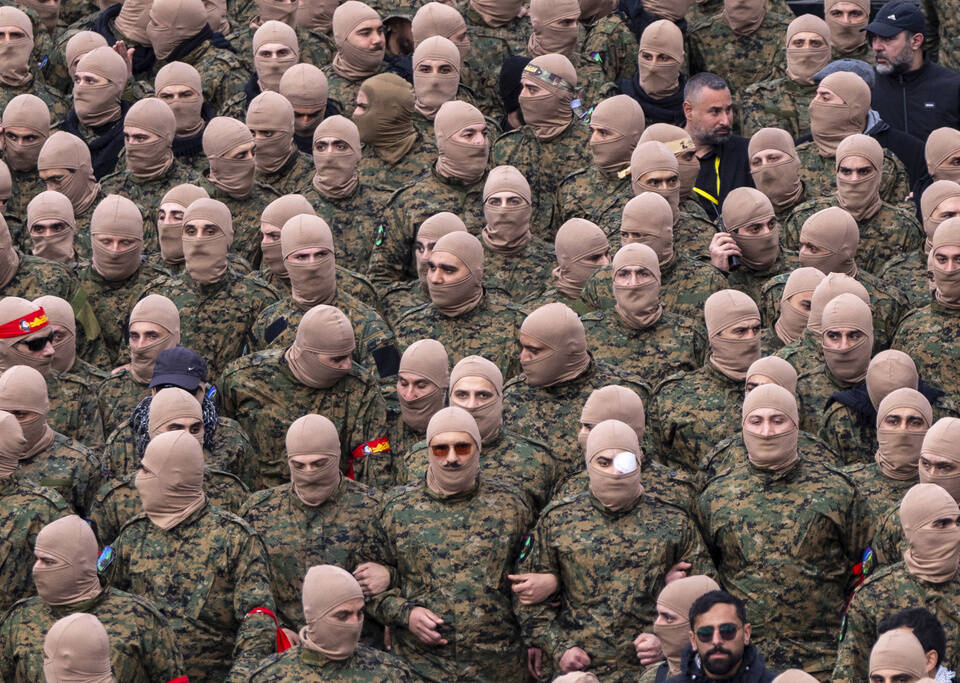The Associated Press is being ridiculed for a head-scratching headline on a similarly head-scratching story about the “survivors of Israel’s pager attack on Hezbollah” who “struggle to recover.”
The piece points out that Hezbollah itself acknowledges most of those wounded and killed were “its fighters or personnel,” but what reporters Bassem Mroue and Sarah El Deeb fail to mention even once in their lengthy article is that Hezbollah is designated a terror organization by the United States. Instead, it is identified as a “militant group” or “a major Shiite political party with a wide network of social institutions” with “members” and “fighters” (i.e. not terrorists).
On Thursday’s show, Megyn was joined by Tom Bevan and Andrew Walworth of RealClearPolitics to discuss the absurd framing of the story and what it says about the state of media today.
The AP Report
Last September, a covert Israeli operation simultaneously detonated thousands of pagers and walkie talkies belonging to Hezbollah across Lebanon and Syria. The attack came after Israel infiltrated the supply chain to sell the rigged devices to the group.
In an article titled “Survivors of Israel’s pager attack on Hezbollah struggle to recover,” the AP reported the “indiscriminate” detonations wounded more than 3,000 people and killed 12, including two children. Yet by Hezbollah’s own admission, nearly all of those wounded or killed were “its fighters or personnel… relatives of the group’s personnel, or workers in Hezbollah-linked institutions.”
“Ten months later, survivors are on a slow, painful path to recovery,” Mroue and El Deeb wrote. “The scars also mark them as a likely Hezbollah member or a dependent.”
The AP claimed that, in an effort “to report on the human toll of Israel’s exploding-pagers attack targeting Hezbollah,” it “attempted to reach survivors” and “contacted Hezbollah and its association treating those affected by the attacks to see if they could facilitate contacts.”
It was through “a representative of Hezbollah’s Association of Wounded” that the AP received the contacts of “eight people who had expressed willingness to talk.” The outlet claimed six agreed to be interviewed “when independently contacted by AP.”
Among those who wanted to talk was Mahdi Sheri, a 23-year-old “Hezbollah fighter,” who had apparently just returned from the frontlines and was spending time with family before he went to check his vibrating pager.
The AP reported Sheri lost his left eye and has very limited sight out of his right eye as a result of the explosion, meaning he “can no longer play football” or be a terrorist. While he “realizes it’s impossible now to find a role alongside Hezbollah fighters,” Mroue and El Deeb wrote, Hezbollah is “helping him find a new job.”
Mroue and El Deeb also spoke to 12-year-old Hussein Dheini, who “picked up the pager that belonged to his father, a Hezbollah member.” According to the AP, he himself is “a member of Hezbollah scouts, the group’s youth movement.” The explosion reportedly damaged his eyes, hands, and nose.
Media Malpractice
The backlash on social media has been swift, with many accusing the AP of presenting terrorists as victims. But the outlet is standing by the story.
Megyn said the framing is remarkable even by AP standards. “This would be like us saying, ‘the families of the 9/11 terrorists remain in mourning at the loss of their gifted pilots,'” she said. “I mean, this is a crazy-ass bent on editorial.”
And she wondered who the article was written for. “They say the hours of interviews offered a ‘rare glimpse into the attack’s human toll.’ I’m sorry, but we don’t care,” Megyn explained. “If you’re gonna do the terrorism, you’re gonna probably die by the terrorism. If you’re gonna do the terrorism from your home around your family, you’re endangering them too.”
“This is an absolutely crazy way in[to the story],” she added. “I don’t remember us doing, like, the single tear shed for the al Qaeda family members… but… when it comes to Israel, all the rules are different.”
In Bevan’s view, the article represents a larger issue in corporate media toady. “This story is absurd in and of itself, but it highlights the broader problem… The Associated Press and a lot of the media, the way that they frame these stories and talk about the narratives… they’re constantly relying on, you know, the Gaza Health Ministry for casualty numbers,” he noted. “As news consumers, how can we trust anything that they print… Where can we get accurate information about what is actually happening in the Middle East right now?”
Walworth agreed. “There are examples… of bias that have just gone so far that they appear ridiculous,” he concluded. “And that is an example… That is a pretty ridiculous headline.”
You can check out Megyn’s full interview with Bevan and Walworth by tuning in to episode 1,124 on YouTube, Apple Podcasts, or wherever you like to listen. And don’t forget that you can catch The Megyn Kelly Show live on SiriusXM’s Triumph (channel 111) weekdays from 12pm to 2pm ET.


